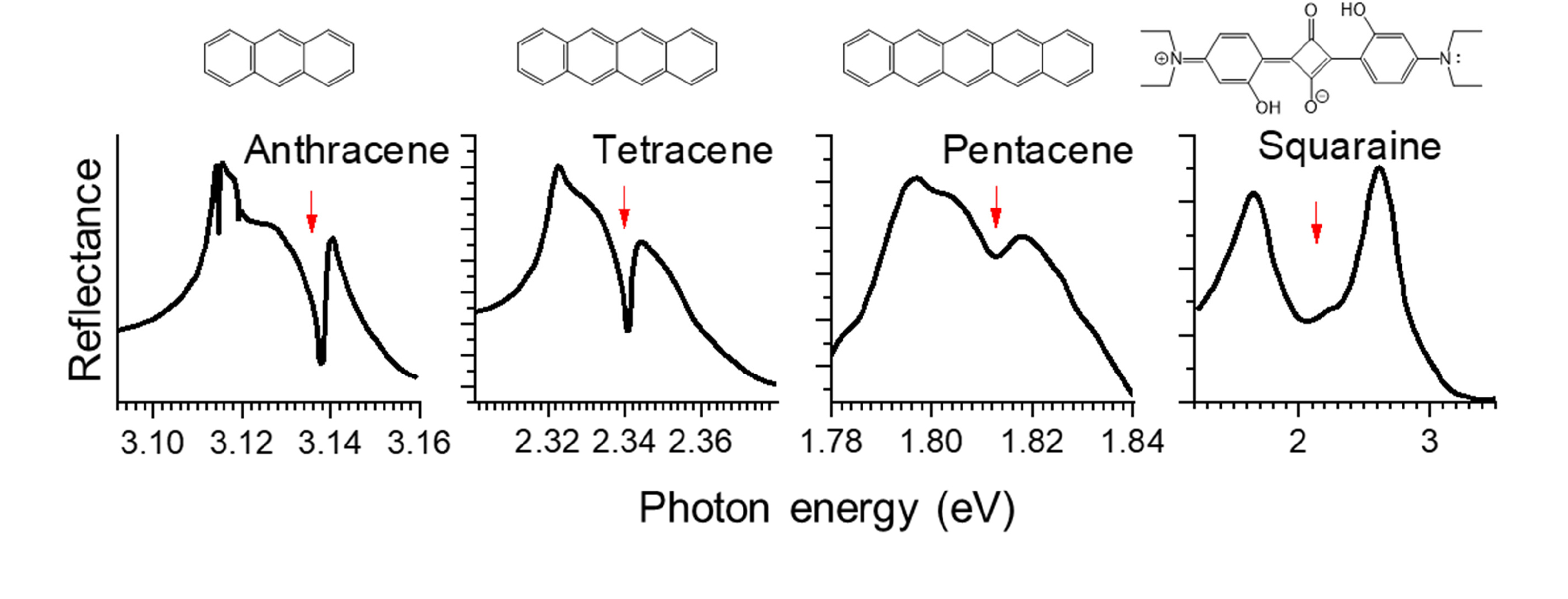Polaritons in organic crystals at M2N
Molecular semiconducting materials that strongly absorb visible and near infrared light are used in organic solar cells. For wavelengths near an allowed optical transition, crystals of dye molecules usually show high reflectance. This seems at first sight to preclude efficient absorption of light by the crystals. However upon closer inspection, the reflection band of these crystals near the allowed transition shows a minimum in reflectance in the middle of the band. This minimum can be assigned to polaritons. The polaritons arise from the strong coupling between electromagnetic waves with electronic polarization and excitation waves of the molecules. The polaritons allow for efficient in-coupling of light into organic crystals.
Within M2N we study fundamental properties of polaritons in organic crystals:
Upon illumination of the crystal at a wavelength corresponding to the excitation of polaritons at the minimum in the middle of the reflection band, light should be able to enter the crystal efficiently. Transport of the energy by the polariton to the interface with a second crystal can in charge carrier generation. The generation of carriers in turn should result in a photovoltage and/or a photocurrent. The external quantum efficiency spectrum of this photovoltaic action is to show a maximum at the wavelength associated with the minimal in reflection, providing direct evidence for the involvement of polaritons in the photovoltaic response.

Reflection spectra for some crystals of organic dye molecules. The red arrow indicates the local minimum in the middle of the reflection band associated with the excitation of polaritons
Contact
Stefan Meskers